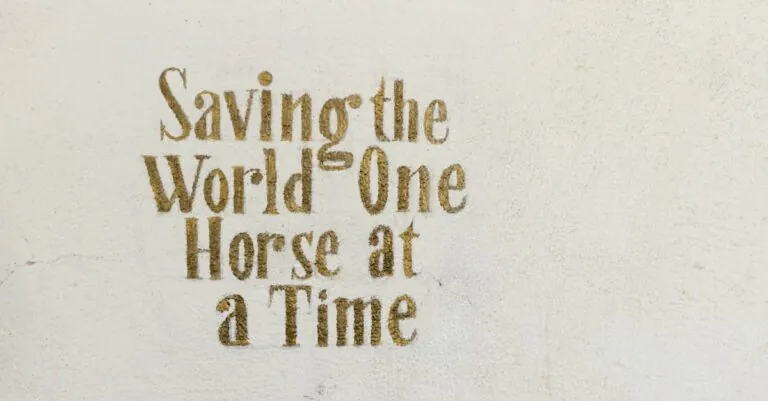Table of Contents
ToggleIn a world where first impressions matter more than ever, the fashion styling hustle has become the secret weapon for those looking to stand out. Whether it’s a job interview or a night out, the right outfit can transform the ordinary into the extraordinary. Who knew that pairing polka dots with stripes could be the key to unlocking a whole new level of confidence?
But let’s be real—navigating the fashion jungle can feel like trying to find a needle in a haystack, especially with trends changing faster than you can say “wardrobe malfunction.” That’s where the fashion stylist swoops in like a superhero, armed with an arsenal of tips and tricks to elevate anyone’s style game. Get ready to dive into the world of fashion styling, where creativity meets hustle, and every outfit tells a story worth sharing.
The Evolution of Fashion Styling Hustle
Fashion styling has undergone significant transformation over the decades. Starting as a niche career, it has evolved into a prominent field embraced by many. Stylists now influence not just individual wardrobes but also entire fashion campaigns and trends.
In the past, stylists primarily served celebrities and high-profile clients. Now, they cater to a broader audience, encompassing everyday consumers seeking fashion advice. With social media’s rise, stylists reach wider audiences, showcasing their skills through various platforms.
The demand for personal stylists has increased as fashion accessibility rises. Many individuals recognize the value of expert input to enhance personal style. This shift has made stylist services more mainstream than before.
Technology shaped the evolution of fashion styling. Online tools and apps assist stylists in creating looks for clients. Virtual consultations now provide convenience for those seeking guidance without needing in-person meetings.
Additionally, the fashion industry emphasizes sustainability. Stylists now consider eco-friendly options when curating outfits. This trend reflects growing awareness about ethical fashion choices.
Diverse styles emerge continuously, whether through inclusivity or cultural influences. The evolution has prompted stylists to adapt and innovate constantly. Trends now reflect a blend of influences from across the globe.
Fashion styling’s future remains bright as it embraces change. Professionals will continue to explore new ideas and concepts. The hustle in fashion styling signifies both a passion for self-expression and an understanding of industry demands.
Key Skills for Success
Fashion stylists excel by mastering key skills. These skills ensure they navigate the fast-paced world of fashion effectively.
Trend Awareness
Trend awareness remains crucial. Staying updated with fashion trends helps stylists anticipate client needs. They research runway shows and follow influential designers. Utilizing social media platforms, stylists discover emerging styles and popular colors. Recognizing personal preferences is essential for creating customized looks. Market analysis provides insights into consumer behavior, aiding in trend prediction. Knowledge of historical trends also informs current styles, enhancing overall expertise.
Client Communication
Client communication plays a fundamental role in styling success. Establishing rapport with clients builds trust. Listening actively helps stylists understand preferences and flaws in wardrobes. Asking targeted questions clarifies specific fashion goals. Offering guidance through honest feedback fosters confidence. Articulating ideas clearly ensures clients grasp the stylist’s vision. Regular follow-ups maintain engagement and strengthen relationships. Strong communication skills enable stylists to adapt recommendations based on evolving client needs.
Creative Problem Solving
Creative problem solving stands at the heart of effective styling. Stylists regularly face challenges, such as budget constraints or limited wardrobe options. Leveraging creativity helps them devise innovative solutions that satisfy client expectations. They think outside the box when mixing patterns and textures, crafting unique outfits. Flexibility allows them to pivot quickly when plans change. Constructing multiple outfit options ensures clients have various choices. Addressing client concerns proactively mitigates potential issues, ensuring a seamless styling process.
Building Your Portfolio
A strong portfolio showcases a stylist’s skills and expertise. It serves as a visual resume for potential clients and collaborators.
Selecting Your Best Work
Curating standout pieces is essential for an impressive portfolio. Showcase diverse styles to highlight versatility; include examples of various events or occasions. Clients appreciate seeing successful transformations through before-and-after images. Consider including testimonials from satisfied customers or colleagues, which strengthen credibility. Focus on quality over quantity—select only the best six to ten outfits that reflect talent and creativity.
Utilizing Social Media
Leveraging social media platforms amplifies visibility and expands reach. Use Instagram and Pinterest to share eye-catching images of styled outfits. Engage with followers by posting styling tips, behind-the-scenes content, or live Q&As. Collaborate with influencers or brands to broaden exposure and gain new clients. Consistently maintain an aesthetic to create a recognizable brand. Track engagement to adjust content strategies and enhance audience interaction.
Networking in the Industry
Networking is crucial for success in the fashion styling industry. Building connections enhances visibility and opens doors to exciting opportunities.
Collaborating with Other Creators
Collaboration plays a pivotal role in fashion styling. Stylists benefit from partnerships with photographers, makeup artists, and other creatives. Working together leads to unique projects that showcase skills and expand portfolios. Each collaboration offers access to different audiences, allowing stylists to gain more followers and clients. Emphasizing shared goals during partnerships enhances creativity and results in memorable content. Engaging in joint initiatives can also stimulate fresh ideas, sparking innovative approaches to styling.
Attending Fashion Events
Fashion events serve as prime networking platforms. Attending shows, trade fairs, and industry parties exposes stylists to key industry players. Meeting designers, brands, and fellow stylists can lead to valuable connections and collaborations. Participation in workshops and panels adds knowledge while providing opportunities to showcase expertise. Engaging in conversations at these events helps build relationships that can influence future projects. Cultivating a presence in the industry through event attendance is essential for building a successful future in fashion styling.
Challenges Faced by Fashion Stylists
Fashion stylists encounter several challenges in their daily work. Keeping up with rapidly changing trends poses a significant hurdle. Each season brings new styles, and staying updated requires constant research and adaptation. Clients often have varying expectations, making effective communication essential for achieving satisfaction.
Budget constraints commonly complicate styling efforts. Many clients seek stylish looks without overspending, compelling stylists to balance creativity with costs. Limited wardrobe options can also create difficulties. When clients possess small or outdated collections, finding fresh looks within those limitations becomes crucial.
Building a personal brand proves challenging amid intense competition. With numerous stylists in the industry, establishing a unique identity and reputation is essential for attracting clients. Networking presents another obstacle. Connecting with photographers, makeup artists, and influencers can expand opportunities but demands time and effort.
Additionally, managing client relationships requires finesse. Stylists must navigate differing personalities and preferences, ensuring a harmonious experience. Feedback can vary, and receiving criticism is part of the job. Professionals need to develop resilience and adaptability to thrive in this dynamic environment.
Time management plays a pivotal role in a stylist’s day. Juggling multiple clients, appointments, and deadlines necessitates organizing skills and efficiency. Dealing with stressful situations is also part of the process. Unforeseen issues, like last-minute changes or wardrobe malfunctions, require quick thinking to resolve.
Lastly, sustainability has become a growing focus. Clients increasingly demand eco-friendly options, prompting stylists to consider sustainable brands and materials. Adapting to these expectations shapes the way services are delivered. These challenges underscore the complex yet rewarding landscape of fashion styling.
Fashion styling is more than just choosing outfits; it’s about crafting identities and telling stories through clothing. As the industry evolves with technology and sustainability, stylists have the unique opportunity to influence personal style on a broader scale.
Navigating the complexities of trends and client expectations requires a blend of creativity and strategy. By leveraging social media and networking, stylists can expand their reach and showcase their expertise.
The future of fashion styling is bright, filled with endless possibilities for those willing to adapt and innovate. Embracing this hustle not only enhances individual confidence but also contributes to a more inclusive and sustainable fashion landscape.







